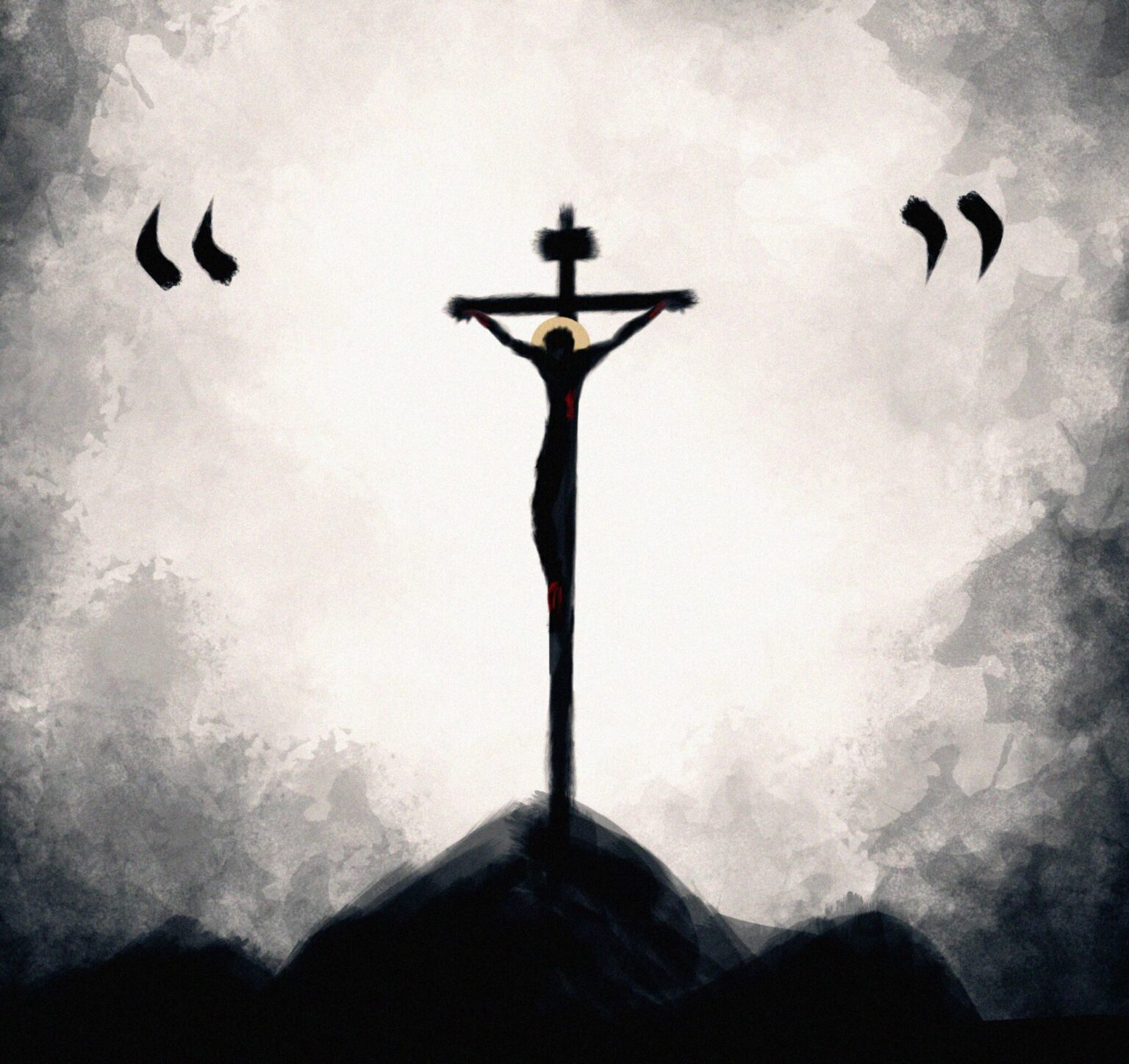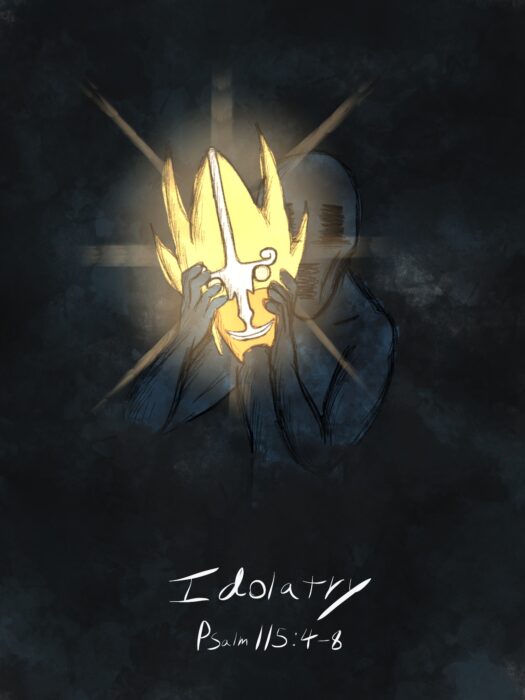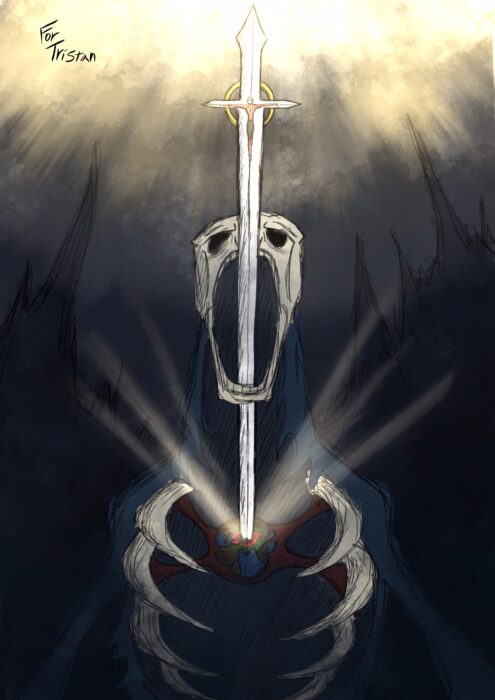“One thing I have asked of the LORD, and that will I seek after: that I may dwell in the house of the LORD all the days of my life, to gaze upon the beauty of the Lord and to inquire in His temple.”
– Psalm 27:4
Over the last five posts we’ve looked at Jonathan Edwards’s concept of Beauty. We’ve established that Ultimate Beauty – the beauty by which all beauty is tested and proven – is the Intertrinitarian love of God. God the Father pouring Himself out in love to God the Son, God the Son pouring Himself out in love to God the Father, and God the Spirit as the loved cascading between Father and Son – this, Edwards asserts, is Beauty. Another way to say this is that Beauty is, essentially, Love.
Now I want to take all that we’ve developed over the last five posts and “wear” these concepts as “lenses” through which to see the cross of Christ.
The Cross as the Incarnation of Beauty
God’s Love for God
Since Beauty is love, the greatest beauty that creation could sustain would also be the greatest love creation could sustain. The supreme instance of love would also be the supreme instance of beauty. But, in order for an instance of love to be Ultimate Beauty – that is, in order for it to be unsurpassable in its beauty – it would have to be the eternal love of God for God somehow manifest within the created sphere, since God’s Intertrinitarian love for God is unsurpassable love and therefore unsurpassable beauty.
Have we ever seen such a love? Have we ever seen the uncreated love of God for God communicated into creation? If we can find this, the highest love creation can bear, we will have found the highest beauty creation can bear.
And we see this love at the cross. Before going to His death, Jesus prays:
“And now Father, glorify me in your own presence with the glory that I had with you before the world existed” (Jn 17:5, italics mine).
He asks that now – that is, in the suffering He’s about to enter which will climax at the cross – that now the Father would glorify Him with the glory that He had before creation. And what is the pre-creation glory of God? Edwards argues that it is God’s internal life. The Father knowing Himself in the Son and the Son knowing Himself in the Father, and the two pouring themselves out wholly in love to one another – “God known and loved” – is the Trinitarian life of God, it is His glory. And this is what Christ’s asks to be revealed in His death.
This is exactly what we see.
On the cross – just as in eternity past – God the Son pours Himself out wholly and unreservedly in love to the Father. However, under the fallen sun, self-outpouring love necessarily takes the shape of death – how else besides death could a love that is the whole self exhaled into the beloved be manifest within creation? Because God’s glory – His beauty – is He Himself known and poured out in love to Himself, only an instance of the Son’s complete self-giving to the Father could perfectly communicate who He is to His creatures. And this can only happen if the Son binds Himself to perishable flesh, and pours Himself out willingly in love to the Father. Wonder of wonders….creation is the canvas for the communication of God’s glory, and the supreme communication of that glory comes when God the Son screams the supremacy of God to all of creation by offering up Himself wholly in love to His Father on the cross.
The cross is the supreme creaturely communication of God’s glory, which is to say it is the supreme communication of God known and loved, which is to say it is the supreme communication of love, which is to say it is the supreme communication of beauty. Understood in light of the resurrection, the death of God the Son in love for God the Father through God the Spirit is the most beautiful thing in all of reality.
God’s Love for Man
However, there is a glory of the cross we haven’t yet touched on that I want to now briefly consider. When Jesus Christ is lifted up to die, we are seeing God the Son poured out in love – not just to His Father, but also to His Bride.
When the Son offers up His life on the cross, the Intertrinitarian love of God for God (Father poured out in love to Son and Son poured out in love to Father) is aimed outward. That is to say, the same love that has eternally been the joy of God is now poured out over the head of His rebellious creation. At the cross God loves us – staggeringly – as He loves Himself (John 15:15, 17:23)….and how does He love Himself? By pouring all that He is out in love to Himself. And how can such an act of love be manifest within the created sphere? As said earlier, only through death, the climactic and complete outpouring of life.
So, it can be said that when the Trinitarian glory of God is manifest at Calvary, we are interwoven into its pattern. Like kites drawn up into a tornado or a child’s whistle folded into a symphony orchestra or an incandescent bulb filled with the fires of the Sun, on Calvary, the Bride of Christ is carried into the dance of God’s internal glory, loved with the same love with which God loves Himself. Glory to God for His inexpressible gift!
Consider it, friends, there is no beauty like the cross because there is no love like the cross. It’s there that we know the heart of our God….it’s there that we see what the Person who sustains and controls all things is like. The Holy God, incarnate as man, bearing our sins, pouring Himself out in glory-upholding love to His Father and glory-bestowing love to His Bride, manifesting the Nature and Name of God for all of creation to see, this is love, this is beauty, this is the One True God.
“Who is a God like you, pardoning iniquity and passing over transgression for the remnant of His inheritance?”
– Micah 7:18
Indeed….who is a God like YHWH? No god….not Allah, not the God of Judaism (since, if a Jew does not recognize Jesus as the Son of God, they do not know the true God, John 8:42-44), no one in the Hindu pantheon, not the god of science or human intellect, not the god of advancement or technology or possessions….there is no god like YHWH, who manifests Himself – for our eternal joy and salvation – in love and beauty and glory at the cross of Jesus Christ.




